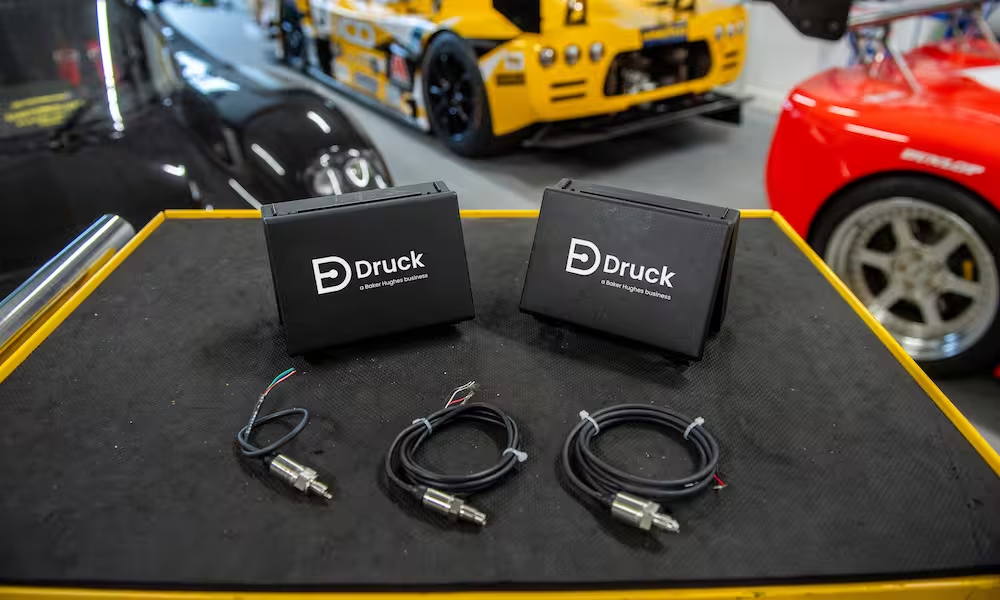Accurately measuring a racecar’s vital functions and fluids helps to minimise the risk of serious failure and keeps the vehicle operating to its highest performance level at all times.
Pressure sensors are key to this, taking measurements and relaying the recorded information through an electronic output and display. Using the sensors and keeping them in good working order makes the racecar more predictable to set up and more likely to produce consistently quick lap times.
Druck, a Baker Hughes business, stands at the forefront of pressure and temperature sensor technology. Since its formation in 1972, the Leicester-based firm has developed, manufactured and delivered its innovative sensor solutions internationally to customers in a wide range of sectors, including aerospace, transportation and meteorology.
Since 1990, it has also been deeply involved in high-level motorsport, where many different aspects of the racecar need monitoring with absolute precision. Druck’s motorsport pressure sensor and calibration portfolio has been used by front-running teams in major series and applied to a multitude of disciplines such as single seaters, sportscars, electric racing and off-road. The company’s three and a half decades of motorsport experience mean it can adapt quickly to the demands of different vehicle properties, as well as various pressurised fluids such as coolants, fuels and oils.
Sensor technology
Modern racecars are covered in sensors. Motorsport is therefore a suitable high-stakes environment where sensor technology can be applied and showcased.
The racecar powertrain is a neat starting point and contains several sensors for different functions. An important one concerns engine oil, which lubricates the moving parts of the power unit to prevent friction that could cause performance-reducing wear. The oil is pumped under pressure into the cavity between the crankshaft and the bearings to stop them from grinding against each other. Pressurised oil also helps to regulate the engine’s temperature, dissipating large amounts of heat. Sensors are therefore required to monitor both oil pressure and temperature.
Druck’s solutions are designed to function well in harsh environments such as high temperatures and high-vibration scenarios. For example, Druck’s PMP4400T serves as a combined pressure and temperature sensor, saving the weight and packaging of separate components. The 14.5mm diameter unit is made of stainless steel and can…
Click Here to Read the Full Original Article at Racecar Engineering…

